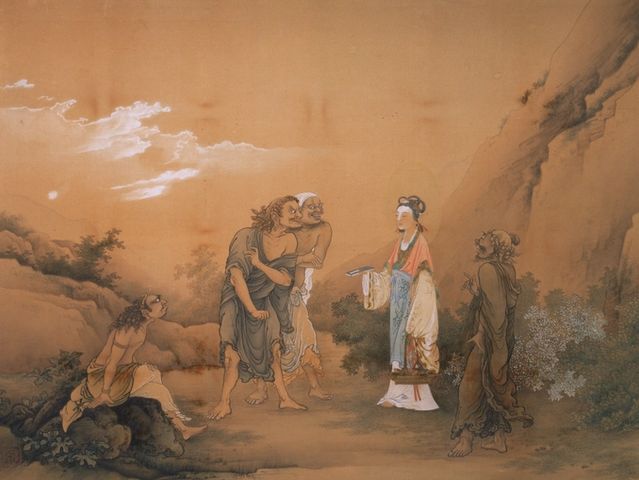The Kanō school of painting dominated Japanese art from the fifteenth to nineteenth centuries. Kanō Masanobu (1434–1530), a samurai and court-appointed artist of the Muromachi government, was credited with founding the school. For seven generations, Japan’s most celebrated artists came from the Masanobu family. Many artists married or were adopted into the family. The official Kanō style remained in the family’s hands for centuries. Many members of the Masanobu family served as military masters, and numerous Kanō painters worked for the nobility.
The Kanō style initially reflected a renewed influence from Chinese painting, but soon developed its own unique characteristics by adopting elements of traditional Japanese painting (yamato-e). The Kanō school is known for bold brushwork and a predominance of ink.












